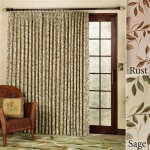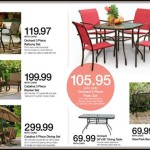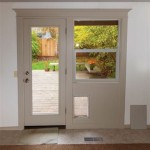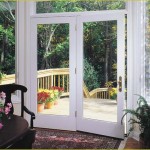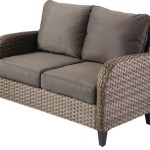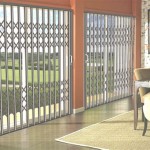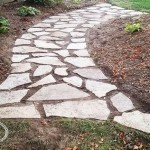Patio Serving Tables: A Comprehensive Guide
Patio serving tables represent a crucial element in outdoor entertaining, bridging the gap between the indoor kitchen and the outdoor dining or relaxation area. These tables, designed with versatility and functionality in mind, provide a designated space for food, beverages, and other essential items, optimizing the outdoor hosting experience. Their utility extends beyond mere convenience, contributing significantly to the overall ambiance and aesthetic appeal of the patio or deck.
The market offers a diverse range of patio serving tables, varying in size, material, style, and features. Understanding the nuances of each type allows buyers to make informed decisions, selecting a table that perfectly complements their existing outdoor furniture and meets their specific entertainment needs. This guide will explore the various aspects of patio serving tables, providing detailed information to facilitate a well-considered purchase.
Key Considerations When Choosing a Patio Serving Table
The selection of a patio serving table requires careful consideration of several factors to ensure optimal functionality and longevity. These factors include size, material, style, and storage capabilities. Thoughtful evaluation of these elements will result in a purchase that seamlessly integrates with the outdoor space and enhances the overall entertaining experience.
Size: The dimensions of the patio serving table should be proportionate to the available space and the anticipated number of guests. A small patio may only accommodate a compact serving table, while a larger deck can often accommodate a more expansive model. Consider the primary purpose of the table; if its primary function is to hold beverages and appetizers, a smaller table may suffice. However, if it will also be used to prepare food or serve buffet-style meals, a larger surface area is necessary. Measure the designated space beforehand to ensure the chosen table fits comfortably without obstructing movement.
Material: Patio serving tables are constructed from a variety of materials, each offering distinct advantages and disadvantages in terms of durability, aesthetics, and maintenance requirements. Common materials include wood, metal, resin wicker, and plastic. Wood, particularly teak and cedar, offers a classic and elegant aesthetic, but requires regular maintenance to prevent weathering and decay. Metal, such as aluminum and stainless steel, is durable and weather-resistant, but can become hot in direct sunlight. Resin wicker provides a stylish and low-maintenance option, but may not be as sturdy as wood or metal. Plastic is the most affordable option, but it is also the least durable and aesthetically pleasing. The selection of material should be based on the local climate, desired aesthetic, and willingness to perform maintenance.
Style: The style of the patio serving table should complement the existing outdoor furniture and the overall design of the patio or deck. Options range from traditional and rustic to modern and contemporary. Consider the shape of the table; rectangular tables are ideal for buffet-style serving, while round tables promote conversation and create a more intimate atmosphere. The color and finish of the table should also be carefully considered to ensure it blends seamlessly with the existing decor. Before making a purchase, it is beneficial to visualize the table in the outdoor space and consider how it will contribute to the overall aesthetic.
Types of Patio Serving Tables
The market offers a diverse array of patio serving tables, each designed with specific features and functionalities. These tables can be categorized based on their design, features, and intended use. Understanding the different types will allow for a more targeted search and ultimately, a more satisfying purchase.
Bar Carts: These tables are typically mobile and designed specifically for mixing and serving drinks. They often feature built-in storage for bottles, glasses, and bar tools. Bar carts are ideal for entertaining guests and creating a designated space for preparing cocktails. Some models include ice buckets and wine racks for added convenience. The mobility of bar carts allows them to be easily moved to different areas of the patio, depending on the needs of the event.
Folding Serving Tables: These tables are designed for portability and storage. They can be easily folded up and stored away when not in use, making them ideal for small patios or decks with limited space. Folding serving tables are typically lightweight and easy to transport, making them a convenient option for outdoor events. While they may not be as sturdy as stationary tables, they offer a practical solution for occasional use.
Serving Carts with Storage: These tables combine the functionality of a serving table with the storage capacity of a cabinet or shelving unit. They often feature drawers, cabinets, and shelves for storing dishes, utensils, and other entertainment essentials. Serving carts with storage are ideal for those who need to keep their outdoor entertaining items organized and readily accessible. They provide a convenient and efficient solution for storing and serving food and beverages.
Grill Carts: Designed to complement outdoor grilling setups, grill carts provide a dedicated space for preparing food, storing grilling tools, and keeping ingredients within easy reach. They often feature stainless steel surfaces, hooks for hanging utensils, and storage cabinets for propane tanks and other grilling accessories. Grill carts enhance the grilling experience by providing a convenient and organized workspace.
Maintaining and Caring for Patio Serving Tables
Proper maintenance and care are essential for prolonging the life of a patio serving table and preserving its aesthetic appeal. The specific maintenance requirements will vary depending on the material of the table. Regular cleaning and preventative measures can significantly extend the lifespan of the table and prevent costly repairs or replacements.
Wood: Wooden patio serving tables require regular cleaning and sealing to protect them from the elements. Clean the table regularly with a mild soap and water solution to remove dirt and grime. Apply a sealant or stain every year or two to prevent weathering and decay. Consider covering the table during periods of inclement weather to further protect it from the elements. For teak, which is naturally weather-resistant, teak oil can be applied to maintain its rich color and prevent it from turning gray.
Metal: Metal patio serving tables are generally low-maintenance, but they still require regular cleaning to prevent rust and corrosion. Clean the table regularly with a mild soap and water solution. For rust spots, use a wire brush or sandpaper to remove the rust and then apply a rust-inhibiting primer and paint. Consider covering the table during periods of inclement weather to further protect it from the elements. Wrought iron furniture may require periodic repainting to maintain its appearance and prevent rust.
Resin Wicker: Resin wicker patio serving tables are easy to clean and maintain. Simply wipe the table down with a damp cloth to remove dirt and grime. For stubborn stains, use a mild soap and water solution. Avoid using harsh chemicals or abrasive cleaners, as these can damage the resin. Consider covering the table during periods of inclement weather to protect it from the elements. UV-resistant resin wicker will resist fading, but it's still prudent to cover it during prolonged periods of direct sunlight. Regularly inspect the wicker for any signs of damage, such as fraying or cracking.
Plastic: Plastic patio serving tables are the easiest to clean and maintain. Simply wipe the table down with a damp cloth to remove dirt and grime. For stubborn stains, use a mild soap and water solution. Avoid using harsh chemicals or abrasive cleaners, as these can scratch the plastic. While plastic is water-resistant, prolonged exposure to UV rays can cause it to fade and become brittle. Consider storing the table indoors or covering it when not in use to extend its lifespan.
Ultimately, the choice of a patio serving table is a personal one, dependent on individual needs, aesthetic preferences, and budget constraints. By carefully considering the factors outlined in this guide, buyers can make an informed decision and select a table that enhances their outdoor entertaining experience for years to come.

Deck And Patio Serving Table

Outdoor Serving Table Buffet Tables

How To Build An Outdoor Serving Table

Outdoor Serving Center Kreg Tool

Berlin Gardens Poly Outdoor Buffet Table From Dutchcrafters Amish

Juskys Brown Polyethylene Wicker Outdoor Serving Bar Counter Table With Shelves Tb001br The Home Depot

Barlow Tyrie Titan Serving Table 2modern

Outdoor Serving Center Kreg Tool

Patio Rustic Outdoor Fireplace Design S Remodel Decor And Ideas Page 101 Serving Table Fireplaces Buffet Tables

Finest Barnwood Kitchen Island Concepts Home To Z Outdoor Serving Table Grill
Related Posts

